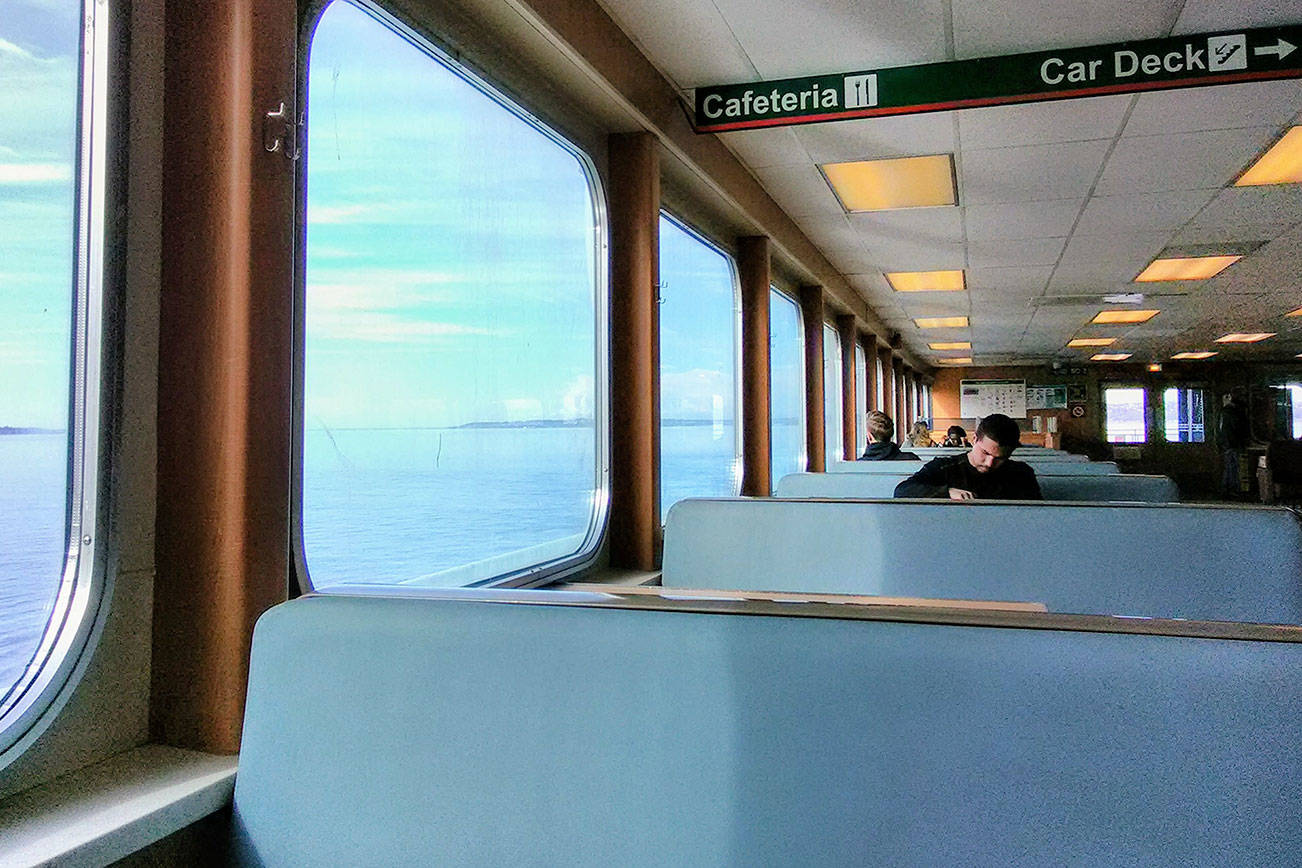As state legislators consider a nearly $10 billion, two-year transportation spending package that invests in transit infrastructure projects and culvert removal work, time is running out to renew a contract between Washington State Ferries (WSF) and the builder currently responsible for constructing new vessels.
The transportation package now in front of the state Senate proposes a 6 cent increase to the state’s gas tax. It also reserves money to convert a number of existing ferries in the fleet to electric hybrids. The House version adds a surcharge for driving onto WSF vessels in addition to a 6% general fare increase, but unlike the House, the Senate budget does not directly provide funds for the purchase or construction of new vessels in the next biennium.
Neither extends the length of the contract with WSF’s builder, Vigor Industrial, which expires this summer. If that window closes, Washington State Ferries won’t see new boats in the water for as long as seven to nine years.
Sen. Joe Nguyen, D-White Center, who represents Vashon and the 34th District, has introduced legislation to extend the contract with Vigor, but his bill would also increase an existing surcharge on fares to pay for new vessels.
“We know that we need ferry boats faster,” said Nguyen. “We need more boats, period.”
Nguyen is co-sponsoring SB 5992, which would extend the contract and increase an existing surcharge on all fares by 50 cents. An additional 50 cent surcharge would also be applied only to single fare tickets to fund vessel replacement.
Nguyen is joined by other legislators, including Sen. Steve Hobbs, D-Lake Stevens, the chair of the Transportation Committee, who first proposed his own 10-year, $15 billion transportation package early last month.
One of the funding mechanisms behind Hobb’s original budget package stemmed from imposing a carbon fee on large scale fossil fuel polluters. It also included language to deter any low carbon fuel standard in the state from being enacted to appeal to businesses. Nguyen said he drafted his legislation out of concern that debate over the inclusion of those measures in the final transportation bill would continue long past the expiration of WSF’s contract with Vigor. That would leave the issue unresolved until it was too late, and set the process to build new boats back to square one, per state law.
“We were pretty confident that the money for the new boat wasn’t going to happen this year, but the contract is due this summer. So if we didn’t get funding for a new boat this summer, we were basically going to be put into a bad situation,” he said.
Nguyen said his bill is prescient. The steep cost for building ferries, he said, will rise significantly within the next decade, and that several of the oldest boats in the ferry fleet will inevitably suffer long-running breakdowns in the meantime, requiring they be taken out of service in order to repair them — impacting the sailing schedule — or even need to be retired. But he acknowledged that the cost of a new ferry would be partially shouldered by riders under his legislation.
“This is not an easy bill,” he said. “I don’t have a magic wand.”
He noted that fare increases were intended to be as equitable as possible, favoring commuters who purchase multi-ride and monthly passes over single fare tickets “so folks who live here will pay less than those who don’t.”
Nguyen said his conversations with islanders and Southworth commuters about ferry service disparities have given him a lot to consider and were valuable in drafting the bill. But he also said that doing his part to ensure there is an adequate number of boats in service would require making difficult choices in order to get ahead of breakdowns and two-boat schedules.
Nguyen said he supports ideas such as expanding Metro bus service onto ferries, including routes that continue onto Fauntleroy and into Seattle from the Vashon dock, as a means of getting more people out of single occupancy cars to reduce congestion. He said he was also interested in helping to pursue other potential multi-modal, public-private partnerships that could move people on and off boats as efficiently as possible, such as providing for access to ride-sharing services — anything that could improve the way people interact with ferries and the docks.
“Not many folks understand what it means to be dependent on a transportation source like the ferries,” he said.
John Vezina, WSF’s director of government relations, said the cost for building a new hydroelectric ferry with the capacity for 144 cars is roughly $160 million. Sticker shock is to be expected, said Vezina, but he added that there isn’t another way around it: Several of the agency’s oldest boats are facing their last years in service, a fact he believes lawmakers appreciate.
Now the task of funding the construction of replacement ferries is up to them.
“There’s such a reality that we need these vessels, and especially for a place such as Vashon where people are relying on them, the devil is in the details,” he said.
With the implementation of a long-awaited new sailing schedule beginning earlier this week, Vezina said he hopes WSF has maximized both the use of what resources and equipment it has while getting people to their destinations as fast as possible. But he emphasized that time was running out — a new, high capacity vessel built by the start of the next biennium in 2022, he said, will offset disruptions in service caused by ongoing maintenance troubles across the fleet.
Within five to seven years, said Vezina, WSF can reasonably expect to lose three to five of its oldest vessels, resulting in a blow to the number of sailings between the communities that depend on ferries to reach the mainland unless they have a new, larger boat in the water.
But even with a new one, said Greg Beardsley of the Vashon Ferry Advisory Committee, things won’t be markedly better for Vashon.
“We’re going to be paying through the nose for little service,” he said, assessing all of the various dilemmas impacting the future of ferry crossings to and from the island, from the schedule change and the two-boat sailings due to maintenance issues, to the contract extension and numerous funding shortfalls. “It is crazy right now.”
Beardsley said he is concerned about the burden on islanders to use the ferries. Between the Senate’s proposed gas tax increase, the House’s 6% fare increase and Nguyen’s fare surcharges, he believes the average daily island commuter will soon have to pay substantially more than they have in the past to ride on the ferries.
According to a 2017 annual report, fares generate nearly 75% of the operating costs for the ferry system, which Beardsley said amounts to daily riders paying far more for a route on and off Vashon than what other communities pay to drive on their own roads. Moreover, in 2015, the Legislature directed a change guiding the use of the state’s capital vessel replacement account — some of the money earmarked for building new boats generated by user fare surcharges has been invested in projects such as renovations to ferry terminals. Beardsley believes this is a raw deal and wants more accountability on the part of representatives not to sideline islanders trying to get where they need to go.
“The Legislature has abandoned the fact that it was supposed to only be for vessel construction, and they’ve been using it for construction of the Seattle terminal,” he said. “Everybody is paying an extra fee to build the Colman Dock and not build new boats, which we desperately need.”
To Beardsley, islanders will have to give a lot to get a little. He is hoping legislators in Olympia won’t leave Vashon in the lurch.
“Whatever it’s going to take, it’s going to take. New boats are new boats.”




